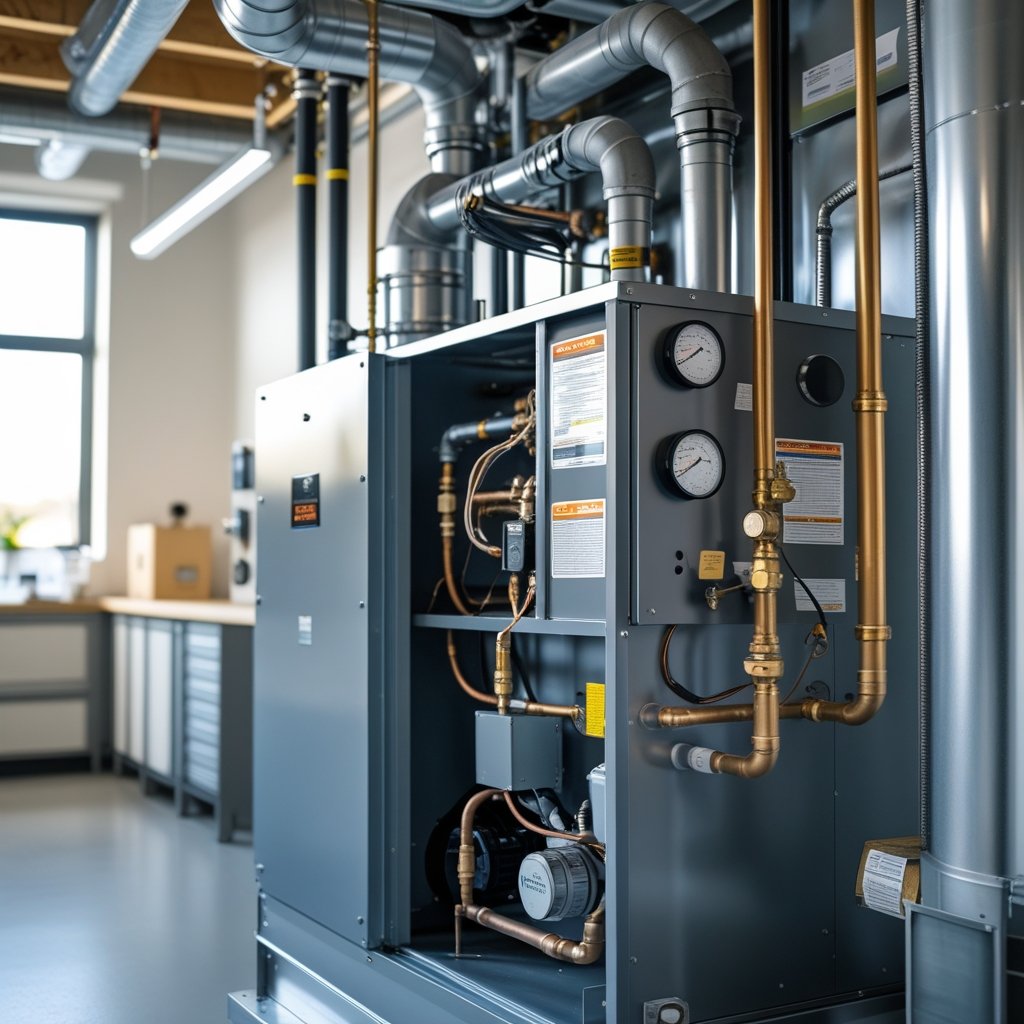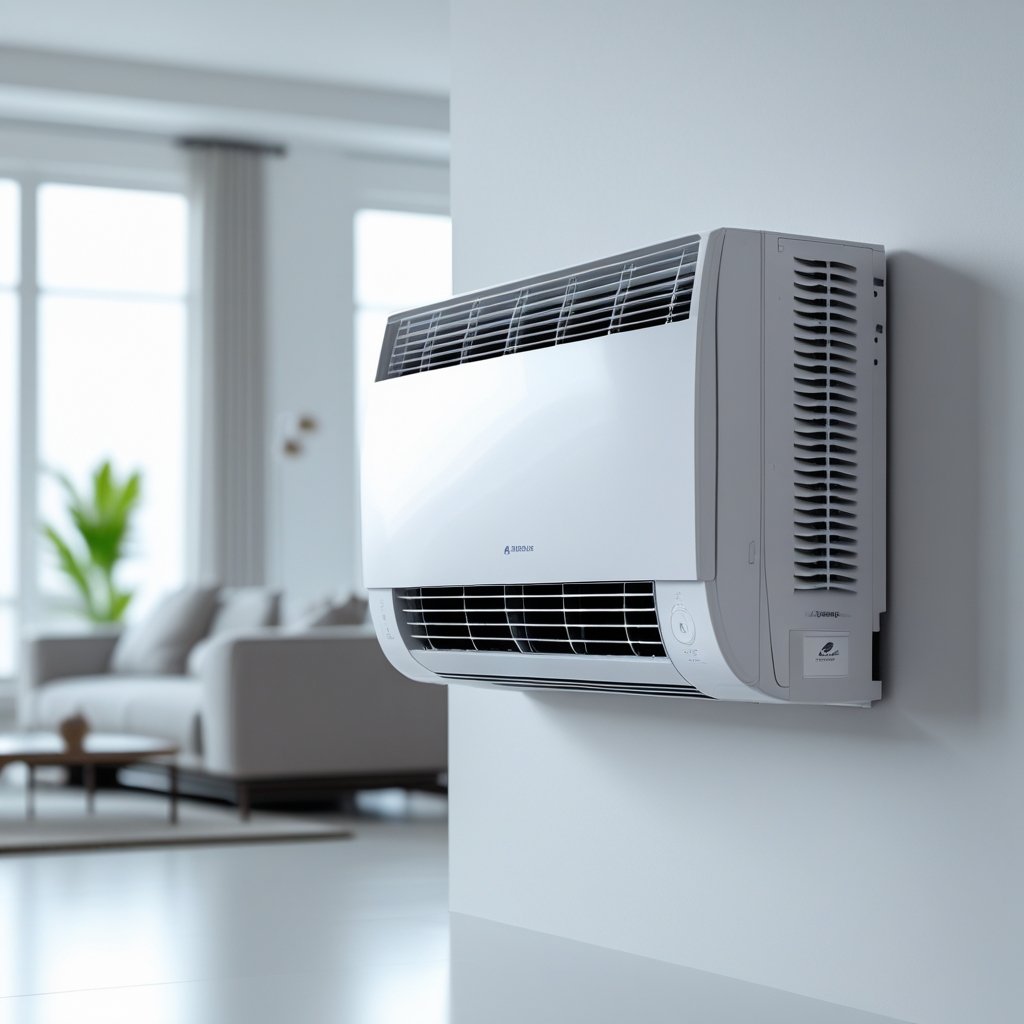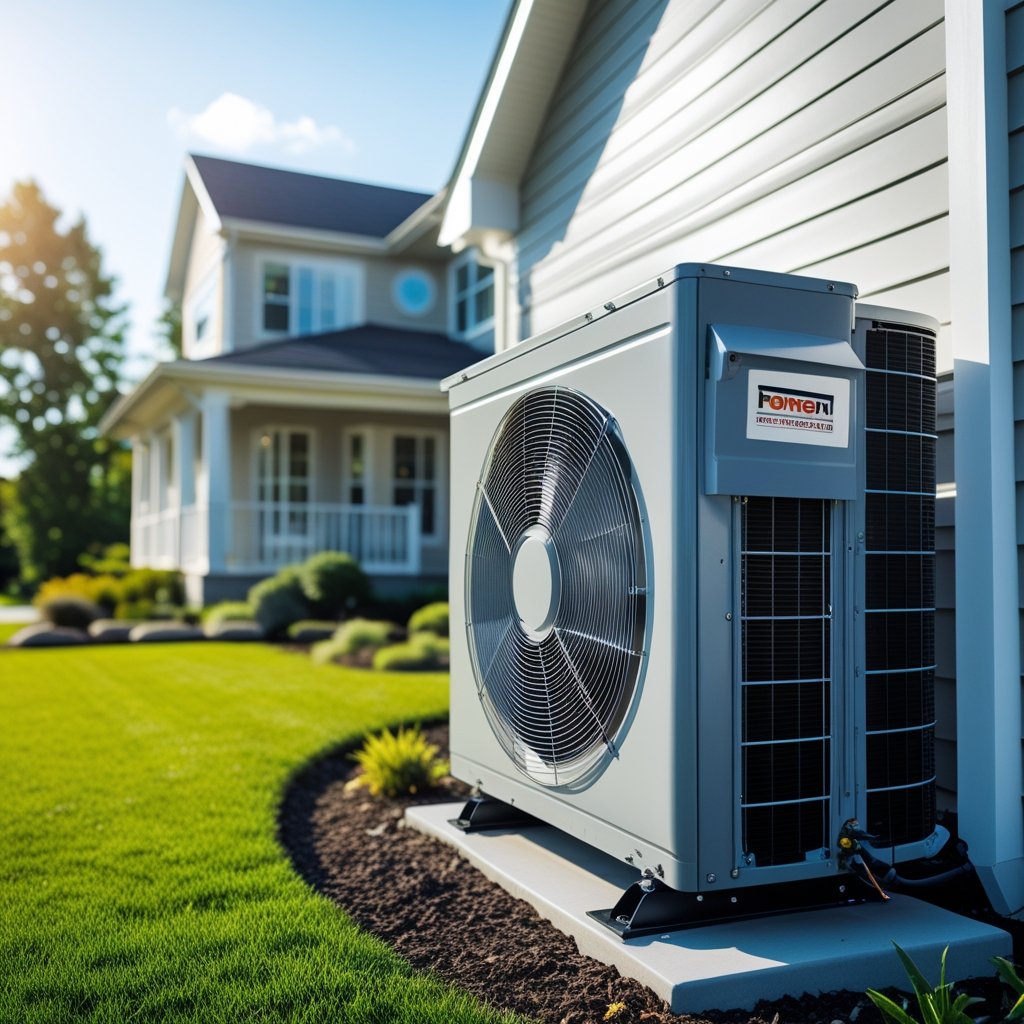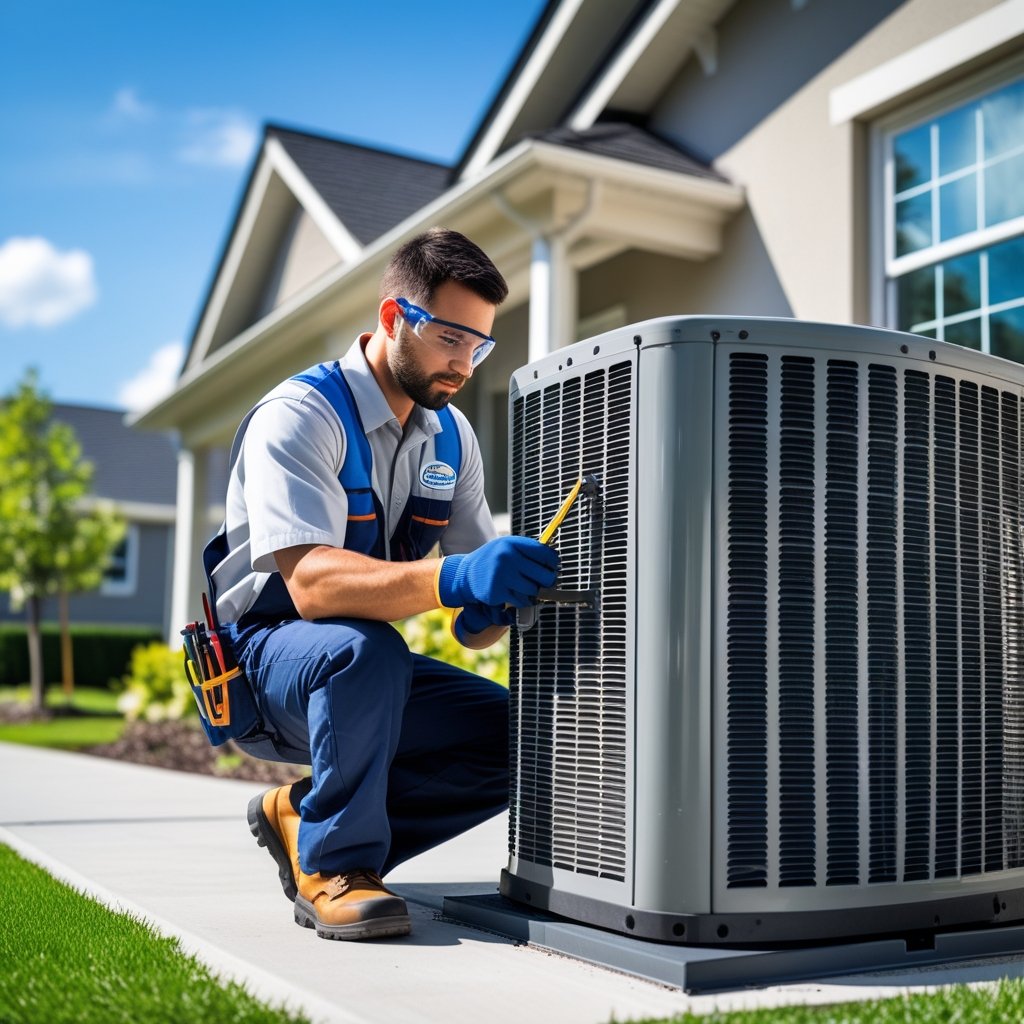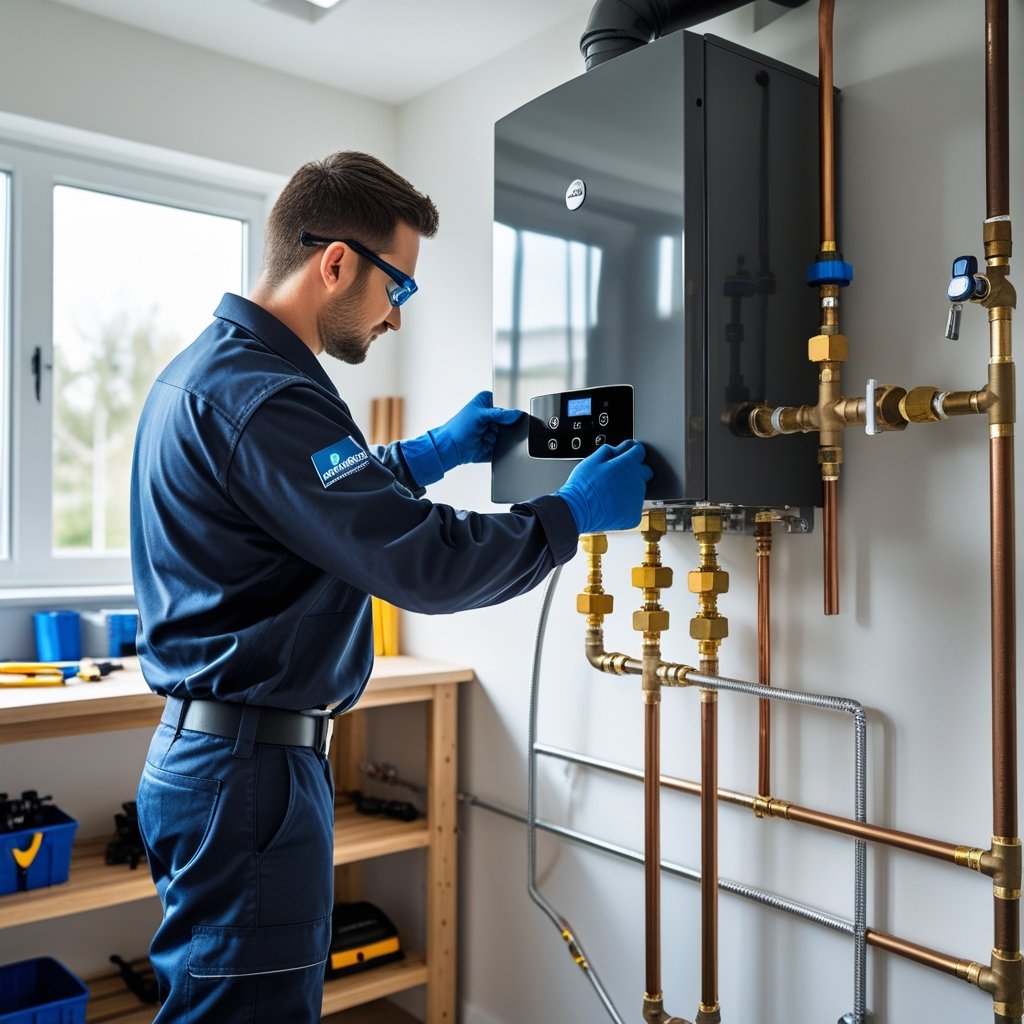A fuel oil furnace filter is a small part with a big job. It traps dirt and debris before they reach your furnace, protecting its parts and helping it run better. If you let the filter clog up, your furnace works harder, burns more oil, and might not last as long.
If you’re in Elizabethtown, Lancaster County, or York, regular filter checks matter even more when it’s cold. Leo Kob Co., around since 1904, helps folks in South Central Pennsylvania keep furnace filters in shape to avoid pricey breakdowns and chilly nights.
It’s honestly worth understanding how these filters work. Keeping yours clean means better air, fewer headaches, and a furnace that won’t quit on you when you need it.
What Is a Fuel Oil Furnace Filter?
Your heating system relies on a fuel oil furnace filter to run clean and efficiently. If you know what it does and how it works, you’ll be better equipped to keep your system healthy and steer clear of costly repairs.
Purpose of a Furnace Filter
Basically, a fuel oil furnace filter catches dust, dirt, and gunk before they can mess up the burner or other parts. This keeps debris from piling up and causing issues. If you keep the filter clean, your furnace burns fuel the way it should, which means you save money and energy.
A filthy filter can clog things up, making your system sluggish and wasteful. Swapping or cleaning the filter is a quick fix that can make a real difference, especially if you’re depending on Leo Kob Co. for keeping things warm in South Central PA.
Key Components
Most fuel oil furnace filters have a sturdy frame—metal or plastic—and a mesh or fibrous pad inside to trap dirt.
Some models have a screen to stop bigger stuff from getting through and messing up the burner nozzles. The exact size and shape? That depends on your furnace model, so double-check what fits.
At Leo Kob Co., we always make sure the filter fits snugly—no leaks, no fuss. That’s especially important when winter hits in Lancaster County or York.
How It Works
When your furnace runs, air mixed with heating oil flows through the filter. The filter grabs dirt and gunk before they can reach the burner.
By blocking particles, the filter helps keep the flame steady and combustion clean. That means you burn less oil and pollute less.
But if the filter gets clogged, airflow drops and the furnace strains. That’s when you see higher bills and risk breakdowns. Checking and changing the filter regularly keeps things humming along when you need heat the most.
Types of Fuel Oil Furnace Filters
There’s more than one kind of fuel oil furnace filter, and each comes with its own quirks. What you pick affects how often you’ll need to fuss with it and how well your system works. Here’s a quick rundown of the main types so you can figure out what fits your life.
Disposable vs. Reusable Filters
Disposable filters are simple—use them, toss them, grab a new one. They’re cheap to buy but need swapping every month or so, sometimes every three months if you’re lucky.
Reusable filters stick around longer but need regular cleaning. You’ll want to wash them every month or two. They last a year or more if you treat them right, but you have to put in the elbow grease.
The choice? Depends on whether you’d rather save a few bucks or save some time.
Fiberglass Filters
Fiberglass filters are about as basic as it gets. They’re thin, cheap, and good for catching bigger dust and dirt. Don’t expect them to trap fine stuff like pollen or pet hair.
Since they’re disposable, just swap them out each month during heavy heating season. No cleaning needed. They work if you’re not worried about allergies and just want to protect your furnace without spending much.
Pleated Filters
Pleated filters have those folded layers, which means more surface area to trap dust and even smaller bits. They’re made from fabric-like material and last longer than fiberglass.
Plan on changing pleated filters every three months—maybe sooner if your place is extra dusty. They’re a solid pick if you want better air and don’t mind spending a bit more.
Electrostatic Filters
Electrostatic filters use static electricity to grab dust, pollen, smoke, and other tiny particles. They’re pretty effective—especially if you’re dealing with allergies.
Some are disposable, some are reusable. If you go the reusable route, rinse and dry them often to keep the static working. They’re a solid upgrade if you want cleaner air at home.
If you’re in South Central PA—Elizabethtown, Lancaster, York—Leo Kob Co. can help you pick and maintain the right filter for your furnace. Give us a call for a tune-up and keep your system running smooth.
Selecting the Right Fuel Oil Furnace Filter
Picking the right filter comes down to size, how well it cleans the air, and whether it fits your furnace. Get these right, and your system will treat you well.
Filter Size and Fit
Your furnace needs a filter that fits just right. If it’s too small, air sneaks around it, dragging dust along. Too big? It just won’t fit.
Check your manual or the old filter for the right size—usually listed as width x height x depth (like 16x25x1 inches). Or measure the slot if you’re unsure.
A snug fit keeps dust out of important parts like the blower and heat exchanger. If you buy from Leo Kob Co. in Lancaster County, we’ll help you get the size right—no guessing.
MERV Ratings Explained
MERV ratings tell you how well a filter catches stuff. The scale runs from 1 to 16; higher numbers mean finer filtration.
For most homes with oil furnaces, a MERV between 6 and 8 does the trick. It grabs dust, pollen, and pet dander but doesn’t choke airflow. Go too high and you might actually make things worse by straining the furnace.
Look for a filter that keeps things clean without making your system work overtime. If you’re stuck, ask your local HVAC team in Elizabethtown or York for advice.
Compatibility with Furnace Models
Not every filter fits every furnace. Some need special thickness or design. Check your manual or ask a tech if you’re not sure.
Using the wrong filter can mess with airflow or even damage your system. Worse, it could void your warranty. Leo Kob Co. techs in Hershey and Mount Joy can double-check that you’ve got the right fit.
Get the right filter for your furnace and you’ll avoid headaches and keep things cozy all winter.
Signs Your Furnace Filter Needs Replacement
Knowing when to swap your furnace filter can save you money and keep your house comfortable. Some signs are obvious—like extra dust or weird noises. Others sneak up when your system starts struggling.
Reduced Heating Efficiency
If your house feels colder than usual or takes ages to warm up, your filter might be clogged. When airflow gets blocked, your furnace runs longer, burns more oil, and costs you more.
You might notice some rooms are toasty while others stay chilly. That’s another clue your filter isn’t letting air move freely. Changing it out keeps the system running smooth and saves wear and tear.
Folks in Lancaster County or Mount Joy, check your filter every month or so during winter. Leo Kob Co. usually recommends a quick look every 1 to 3 months when it’s cold.
Unusual Furnace Noises
Hear rattling, banging, or whistling? Could be your filter’s packed with dirt. When the furnace struggles to pull air, it makes noise—sometimes a lot of it.
Leaving those sounds unchecked can lead to bigger problems, like overheating or a busted motor. When our Leo Kob Co. team gets called for noisy furnaces around York or Elizabethtown, it’s often just a dirty filter.
Increased Dust in the Home
If you’re dusting more than usual or see stuff floating in the air, your filter might be overdue for a swap. A clogged filter just can’t trap dust, pet hair, or pollen anymore.
If allergies are flaring up or the air feels stale, that’s another hint. Clean filters do a lot to keep indoor air quality decent.
For homes in Elizabethtown or Hershey, check the filter every month when the furnace is working hard. Staying on top of it keeps your place cleaner and helps the system breathe easy.
How to Replace a Fuel Oil Furnace Filter
Swapping out your fuel oil furnace filter is easier than you might think. You just need a few tools, a little patience, and a plan.
Tools and Materials Needed
Before you start, grab:
- The right replacement filter
- Screwdriver (flathead or Phillips, depending)
- Clean rags or paper towels
- Work gloves
- A tray or old container for drips
Double-check that your new filter matches your furnace.
Step-by-Step Replacement Guide
- Turn off your furnace and let it cool.
- Find the filter housing—usually near the burner or behind a panel.
- Use your screwdriver to open the cover.
- Carefully pull out the old filter (try not to drop dirt everywhere).
- Toss the old filter; wipe up any mess.
- Slide in the new filter, making sure it fits snug.
- Close the cover and screw it back in place.
- Turn the furnace back on and make sure it runs smoothly.
Do this at least once a year, or more often if your manual says so.
Safety Precautions
A few quick safety reminders:
- Make sure the furnace is off and cool before you touch anything.
- Gloves help keep oil and grime off your hands.
- Work somewhere with good ventilation—oil fumes aren’t fun.
- Keep a fire extinguisher nearby, just in case.
- Don’t smoke or use open flames near the furnace.
Not sure about any step? Don’t risk it—call Leo Kob Co. in Lancaster County for oil furnace maintenance.
Maintenance Tips for Fuel Oil Furnace Filters
A little care goes a long way with furnace filters. Clean or swap them on time, and you’ll dodge a lot of problems down the road.
Cleaning Reusable Filters
If you’ve got a reusable filter, clean it regularly. Turn off the furnace, pull out the filter, and vacuum or rinse it with warm water. Skip harsh soaps unless the instructions say otherwise.
Let the filter dry completely before putting it back in. Wet filters can mess up your furnace. Clean every month or two, depending on how dusty your place gets. Staying on top of it keeps things running right.
Setting a Replacement Schedule
Even the best filters wear out. Plan to replace your fuel oil furnace filter about once a year, or sooner if you use the furnace a lot or have pets.
Mark your calendar or set a reminder on your phone so you don’t forget. Clean filters mean better air and a happier furnace. If you’re not sure which filter or how often, Leo Kob Co. in South Central PA is always happy to help you figure it out.
Troubleshooting Common Issues
If your furnace isn't heating well or starts making odd noises, the filter might be to blame. Take a look for dirt, rips, or spots where air could leak through. When filters get clogged, your system has to work overtime, which bumps up your energy bills and can even cause damage down the road.
Watch for uneven heat in different rooms or the furnace switching on and off too much. If you spot these problems, go ahead and clean or swap out the filter. If things still aren't right after that, it's time to call a local technician in Elizabethtown or Lancaster County for a closer look. They'll check the whole system and help keep it safe.
Benefits of Regular Filter Replacement
Changing your fuel oil furnace filter on schedule keeps your home healthier, saves energy, and helps your furnace last longer. Every part of your system just works better with a clean filter. It's a small thing, but it protects your investment and keeps you comfortable.
Improved Indoor Air Quality
A fresh furnace filter grabs dust, pollen, and other particles before they float around your home. Cleaner air can make a real difference if anyone in your family has allergies or asthma.
Letting the filter go too long just means more dirt ends up in your living space. That can make things feel stuffy or even bother your lungs.
Stay on top of filter changes and you'll notice less dust on your furniture and fewer weird smells in the house. For folks around Lancaster County or York, where outdoor allergens spike at certain times, this matters even more.
Increased Furnace Longevity
Dirty filters force your furnace to work harder. When airflow gets blocked, parts can overheat or wear out faster, often leading to breakdowns and repairs that aren't cheap.
Keep the filter clean and your furnace runs smoother, with less stress on its parts. That means you can squeeze more years out of your system before needing to replace it.
Honestly, the team at Leo Kob Co. has seen plenty of furnaces in Elizabethtown or Mount Joy that last longer just because the owners stick to a filter routine.
Enhanced Energy Efficiency
A clogged filter slows down airflow, so your furnace burns more fuel oil to get the house warm. That wastes energy and sends your heating bills up.
Swapping that filter on time lets air move freely, so your furnace doesn't have to work as hard. You'll save money and still keep your home cozy.
It's a quick fix that boosts performance—and if you're in Hershey or nearby, it might even help you qualify for energy rebates.
Considerations for Homes with Allergies and Pets
If you deal with allergies or have pets, picking the right fuel oil furnace filter can make a big difference. Look for filters that trap fine particles and handle pet hair well to keep indoor air cleaner.
Specialty Filter Recommendations
For allergy sufferers, filters with a MERV rating between 8 and 13 do a solid job. They'll catch smaller stuff like pollen, dust mites, and mold spores that set off allergies.
You might also want filters marked as "HEPA-type" or "electrostatic" since they snag even finer particles. But heads up—some high-efficiency filters can slow airflow if your furnace isn't built for them.
It's worth checking your furnace specs or getting a pro in Lancaster County or York to take a look. That way, you get a filter that boosts air quality without hurting your system's efficiency.
Managing Pet Hair and Dander
Pet hair and dander pile up fast and can clog filters. Try filters with thicker fiberglass or synthetic media—they're better at trapping that stuff and easier to swap out.
If you can, add a pre-filter to catch big clumps of pet hair before they hit the main filter. It'll help your main filter last longer and keep the furnace running smoother.
Vacuuming and brushing your pets regularly helps too. For homes in Elizabethtown or Hershey, Leo Kob Co. can help set up a maintenance plan so your oil furnace filter (and the whole system) stays clean year-round.
Eco-Friendly Filter Options
Choosing filters that cut down on waste and protect the environment also keeps your heating system cleaner. There are more options now with recyclable materials, and you can learn how to toss old filters the right way.
Recyclable Materials
A lot of fuel oil furnace filters use recyclable parts these days. Look for filters made from natural fibers or recycled paper—they break down easier and don't add as much to landfills.
Some have metal frames you can recycle separately. When you shop, check the packaging or ask your HVAC provider about what they're made of. Leo Kob Co. can help you pick filters that balance performance and eco-friendliness in Lancaster County or nearby.
Using recyclable filters means cleaner air and less waste. You still get solid filtration and help the planet out a bit—why not?
Proper Filter Disposal
Tossing used filters in the regular trash isn't great for the environment. Filters trap dust, dirt, and sometimes fuel residues, so you need to be careful.
If you can recycle, pull out any metal parts and put fiber pieces in paper recycling—just check if your town allows it. If not, seal the filter in a plastic bag before throwing it out to keep dust contained.
Leo Kob Co. always reminds customers in places like Elizabethtown and York to follow local disposal rules. Doing it right helps your home's air and supports community recycling.
Frequently Asked Questions
Keeping your fuel oil furnace in shape starts with regular filter care. Knowing the right size, where to find it, and which brands to trust can save you hassle.
How often should you replace your oil furnace filter?
Swap your oil furnace filter every 3 to 6 months. If your place is dusty or you have pets, peek at it more often.
What size filter does my fuel oil furnace need?
Filter size depends on your furnace model. Check your owner’s manual or just look at the old filter for its measurements.
Which brands offer the best oil furnace filters?
Some brands just make better filters—ones that last and protect your furnace. Leo Kob Co. can help you find trusted options if you're in Lancaster County or nearby.
Where is the oil furnace filter located for easy replacement?
You'll usually find the oil furnace filter near the burner or blower compartment. It’s often tucked inside a metal box or behind a panel you can remove.
How can I find a cross reference chart for my fuel oil furnace filter?
You can look up a cross reference chart online or ask a pro like Leo Kob Co. in Elizabethtown and York to help you match filters.
Is there a difference between oil filters for my vehicle and my home furnace?
Absolutely, there’s a real difference. Vehicle oil filters are designed to clean engine oil, while home furnace filters catch dust and debris floating around in the air. Mixing them up? Not a good idea—each one does its own specific job.

